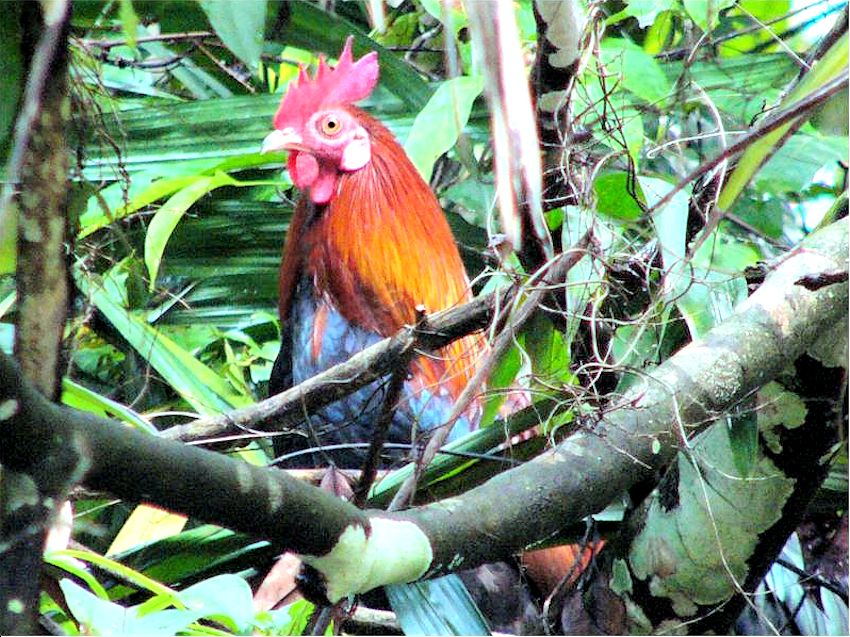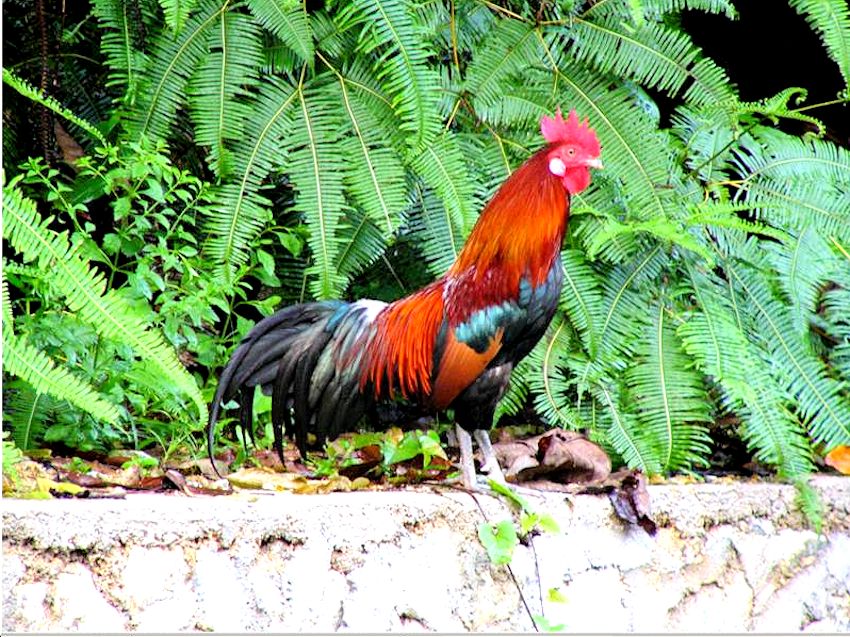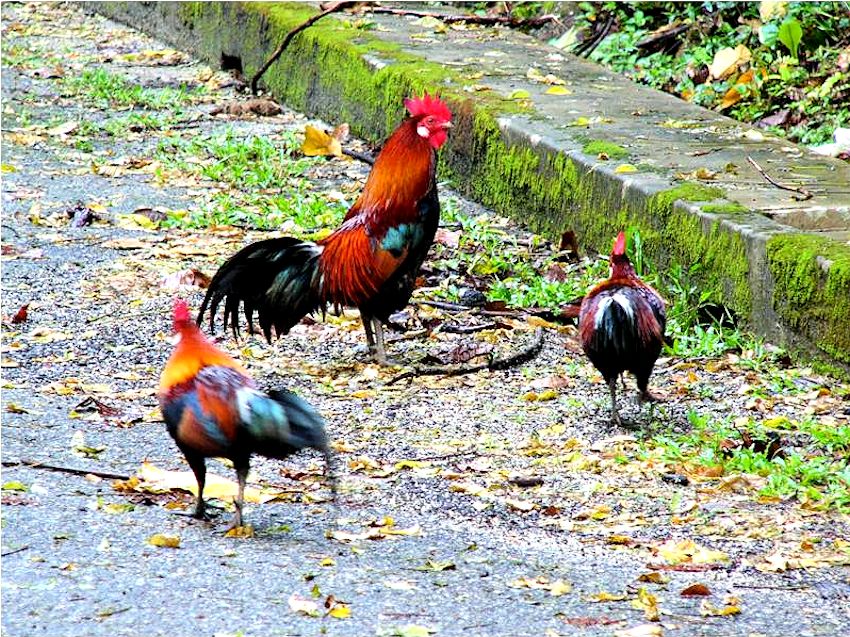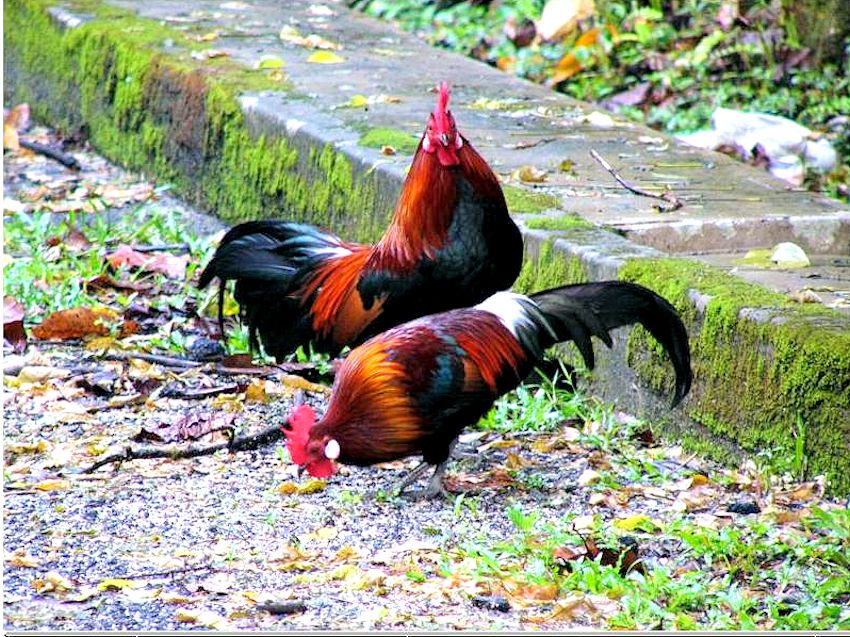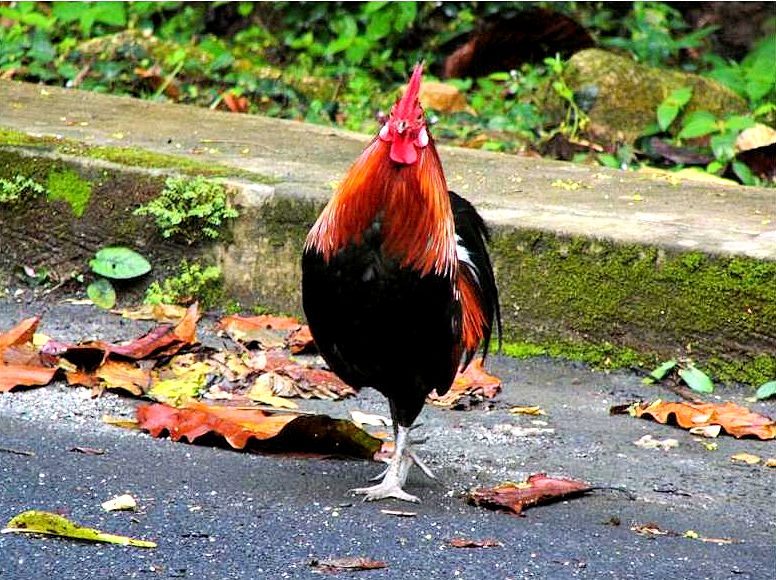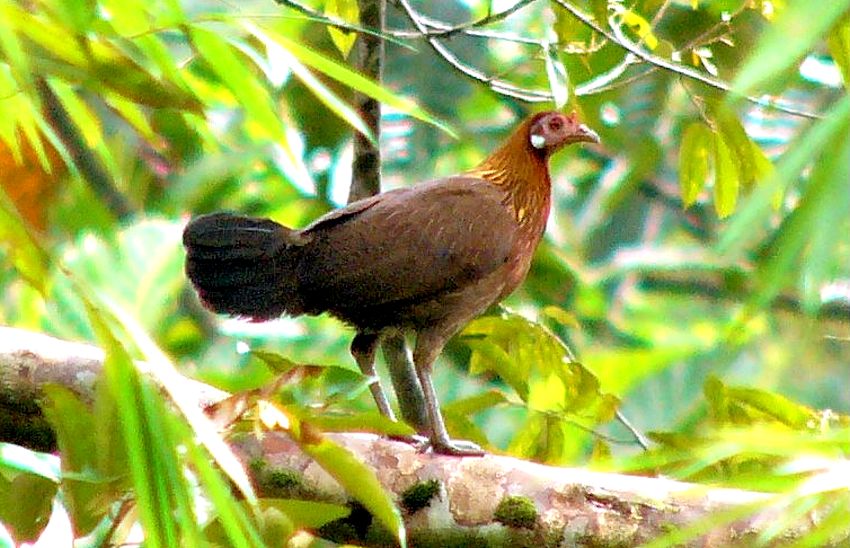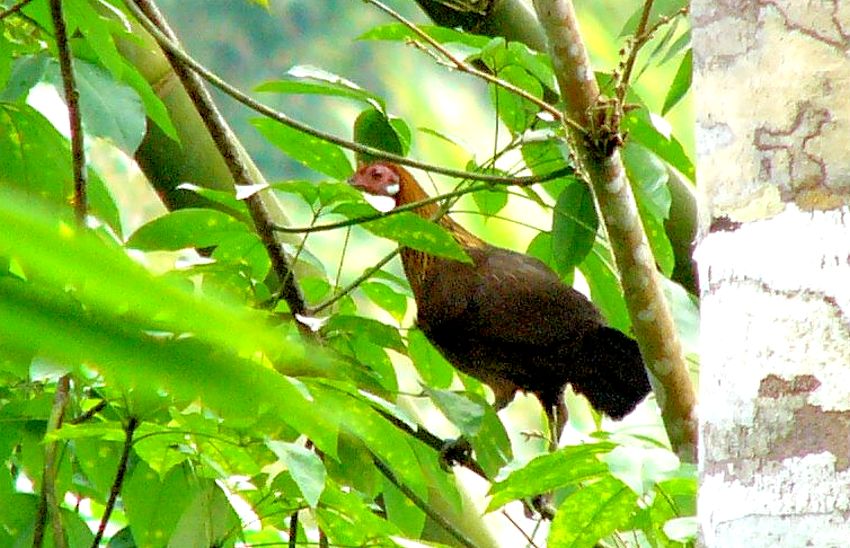|
Junglefowl
The Junglefowl is an interesting bird that most people would be curious to know more about. The real facts. As we are dwelling with the topic of Jungle fowls, there should be 2 situations that needs more clearing up, instead of one. The first one:- Origin of our domesticated chickens The species that we get to see in Malaysia has the common name of Red Jungle Fowl or species Gallus gallus. This bird is a tropical member of the Pheasant family. The Red Junglefowl is one the 4 birds of its kind and the other three members of the genus are the Sri Lanka Junglefowl (Gallus lafayetii), Grey Junglefowl (Gallus sonneratii), and the Green Junglefowl (Gallus varius) Early record showed that "chicken" was first raised in captivity at least 5,000 years ago [in India?] The Cockerel has many characteristics similar to that of the Red Junglefowl, suggesting that our present day chicken could derived from the Red Junglefowl. Study has also shown that the other 3 species do not easily produce fertile hybrids with the Red Junglefowl. Rendering the assumption of the Red Junglefowl being the main contributor to modern days chicken more remote. Recent study suggests possible and more likely hybridization with the Grey Junglefowl started the process. Then the domesticated bird was then passed on to the rest of the world as stable food source. Gallus gallus is an herbivore and insectivore Red Jungle Fowl is found in the North-eastern part of India [foot of the Himalayas] to Southern China and down the Malay Peninsula. The male and female looks entirely different. Males measuring about 65-78 cm long [tail itself is already 28cm], could weighs about a kilogram, are much larger bird. Main diagnostic features are the large red fleshy wattles on the head. On the neck and shoulder, long, bright gold and bronze feathers forming a cape over the back of the bird. Very important too is the looks of the tail. Its long, arching feathers appear dark but under bright lights shines with hues of blue, purple and green. The female's about 41-46 cm long, weighing in at about 600 gms. She should be considered quite colorful when compared to lots of other birds, lacks the flamboyance of the male. Plumage more catering for camouflage. After all she has the chores of looking after the eggs and chicks. Again most important, she also has no wattles or crown on the head I have tried finding out how would the original Red Junglefowl look like and which of our jungle species has the closest resemblances to the original. I have even gone to the Bird Park to look at the Green Junglefowl for clues. It is really an abstract topics better left the experts. But faithfully following Craig Robson, a guru in this field, this Red Junglefowl species should hold the main traits.
And now, the female
I find this sub species a bit bulkier and has more in common with our domestic chicken, in the form of possessing likewise body profile. The female too is shorter or more rounded when compared to the slimmer G. gallus. The female also has a very prominent white ear patch while the male has none. It was clear that the male should not have this distinguishing marking to separate it from the other species. Nothing mentioned about the female having one. I have seen the birds breeding and sure that there was no mix up of the female nor the male inter-mix with the other species. Meaning, there were many pairs encountered and the pattern were consistent. Moreover the white patch on this female was far more conspicuous that that on the counterpart.
I must say the birders in Malaysia are a lucky lot. Despite of rapid urbanization and lax control on the part of Wildlife Department, the wild birds specimen of the Red Junglefowl can still be seen as a common wild bird and very much in its original form though not exactly. In Malaysia, they can be detected or encountered readily in forest edge and deep jungle. Despite all that is written about dilution in the real species, I am quite sure that many elements of the birds, the real Red Jungle continue to exists in our Malaysian forest. |
|
|
With Will would Wander |
|
